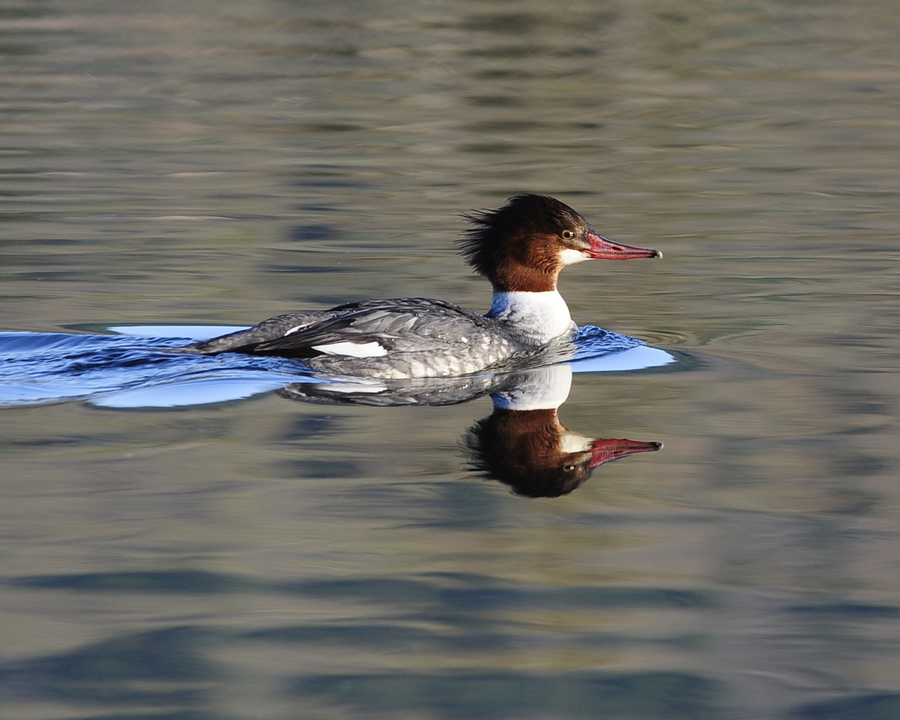


merganser (common) – xwaaqw’
[Mergus merganser Linnaeus] • Many speakers regard this word as the name for both male and female common mergansers. Mergansers are also known as “sawbills” because they have saw-like teeth along the edges of their beaks, which they used to catch fish. The male has white sides and breast, a green head and a red bill. The female is grey with a white throat and long reddish-brown head feathers.
xwaaqw’
Merganser
snes tun’a sqw’ulesh ’i’ xwaaqw’
This bird’s name is merganser.
tthu ’i’ ’u tun’a shxaatth’ustun ’i’ niilh yath ’uw’ sht’es tthu xw’aaqw kws ni’s ’u tthu tsuwmun ’u tthu xatsa’, sta’luw’ ’i’ tthu kw’atl’kwa nilh ni’ shni’stuhws tthu me’mun’us ’u tthu hith.
In picture the merganser is on the shore of the lake, river and seashores, where she stays for a long time with the little ones.
nuw’ sxuxits thu slheni’ xwaaxw’ p’uq’ tthu kwuyhwulhnulhs ’i’ kwikwumuls tumlhalus tthu sxuy’usth.
We can tell this is a female because she has a white throat and with reddish-brown head.
’uw’ nuts’iws ’ul’ tthu ni’ sta’lusth sht’es kws hulis thu xwaaqw’.
Mergansers mate for life.
ni’ touhwus ts’uhwle’ ’i’ tus ’upun ’i yusa’lus tthu tth’utth’uxals ni’ lheq’utus, ’i’ ni’ tskw’ush ’i’ kw’ te’tsus ts’uhwle’ tus lhuhwulhshe’ ’i’ kw’ lhq’etsus skweyul ’u kws shts’unetss ’u tthu tth’utth’xals ’i’ ni’ kwan.
They lay 9 to 12 eggs and incubate them for 28 to 35 days.
’uwu niis hith kwus kwan ’i’ ni’ wulh hwu ’uli’i’mush tthu xwuli’xwaaqw’(allh).
Soon after hatching, the young are able to get around on their own.
ni’ tsukwul’etus thu tens tthu munu’lh nem’ hunum’ ’u tthu sheshum’ qa’ nilh shni’s kwus hw’iiw’tsustum’ kws hwkwunlhnenums.
They will follow their mother to the shallow water where they will learn to hunt for food.
nan ’uw’ stuw’et kws nuqums ’u tthu s’ulhtuns.
They are really good at diving for their food.
’uli’uy’mut tthu xwaaqw’ ’i’ ’uy’ama’ yath ’uw’ shashukw’um’ ni’ ’u tthu qa’
They are very beautiful, smart, clean birds always up early bathing in the water.
tthu ni’ shstatul’ste’wut tthu xwaaqw’ ’i’ xe’xe’.
They are known as a sacred bird.
Hul’q’umi’num’ description by Ruby Peter | sti’tum’at and Gena Seward-Wilson | yutustanaat.


